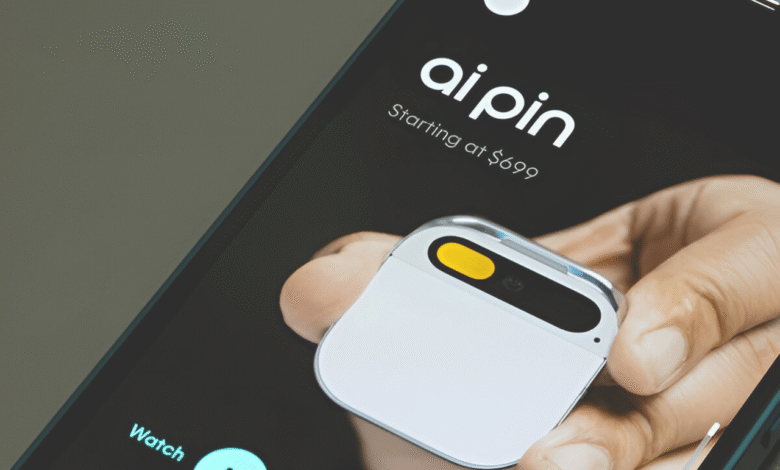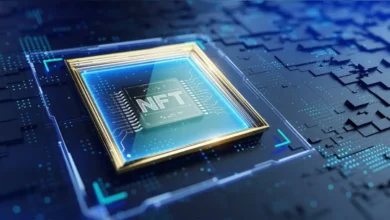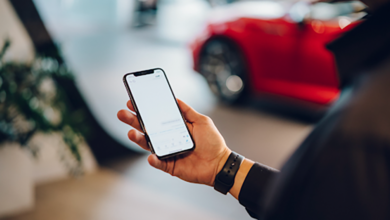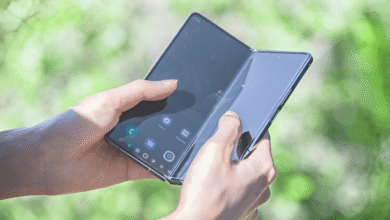The Rise of Humane AI Pin: Is It Really the Future of Smartphones?
Humane AI Pin redefines mobile tech with screenless AI. Can this voice-controlled wearable replace smartphones? Explore its future potential now.

The Humane AI Pin is poised to disrupt the tech industry as the first screenless, AI-powered wearable that could potentially replace smartphones. This revolutionary device, developed by former Apple engineers, combines advanced artificial intelligence with minimalist design to create a truly hands-free digital experience. Unlike traditional smartphones that demand constant screen interaction, the Humane AI Pin relies on voice commands, gesture controls, and a cutting-edge laser projection system to deliver information. But can this futuristic gadget really dethrone the smartphone, or is it just an ambitious experiment in wearable tech?
As we stand at the crossroads of mobile technology, the Humane AI Pin raises important questions about how we interact with devices. With its emphasis on reducing screen time, enhancing privacy, and streamlining digital tasks, it presents a compelling alternative to smartphone dependency. However, challenges like battery life, app compatibility, and user adaptation remain significant hurdles. This explores whether the Humane AI Pin represents the next evolution of personal technology or simply a niche innovation for early adopters.
The Rise of Humane AI Pin
What Is the Humane AI Pin?
The Humane AI Pin is a wearable AI device designed to reduce reliance on traditional smartphones. It operates primarily through voice interactions, gesture controls, and a laser-projected display. Unlike a smartphone, it doesn’t have a screen, instead using AI to process requests and deliver information audibly or through minimal visual cues. Developed by former Apple engineers, the device emphasizes privacy and minimalist design. It can handle tasks like sending messages, making calls, browsing the web, and even translating languages in real time. The idea is to keep users engaged with the real world while still having access to digital assistance.
How Does the Humane AI Pin Work?
The Humane AI Pin leverages advanced AI models, similar to ChatGPT or Google Assistant, but with deeper contextual understanding. Instead of swiping on a screen, users interact via voice commands, hand gestures, or a tiny touchpad. The device projects basic information (like notifications or weather updates) onto the user’s palm using a laser projector. One of its standout features is its always-on AI, which learns user habits over time. It can prioritize important notifications, filter out distractions, and even suggest actions based on location and past behavior. This AI-first approach eliminates the need for endless app scrolling, making interactions faster and more intuitive.
Humane AI Pin vs. Smartphones: Key Differences
Form Factor
The Humane AI Pin is a compact, clip-on wearable designed for hands-free use, while smartphones are handheld devices with larger screens. The Pin’s minimalist design eliminates the need for a display, projecting information via laser instead.
User Interaction
Smartphones rely on touchscreen interfaces, requiring manual input for most tasks. The AI Pin uses voice commands, gestures, and a laser-projected interface, enabling interaction without physical contact.
AI Integration & Functionality
While smartphones use AI as a supplementary feature (e.g., voice assistants), the Humane AI Pin is AI-native, with artificial intelligence driving all interactions—from real-time translations to contextual suggestions.
App Ecosystem
Smartphones dominate with a vast app library, supporting gaming, productivity, and Social media. The AI Pin currently has limited third-party app support, functioning more as a digital assistant than a multipurpose device.
Battery Life
Most smartphones offer all-day battery life, whereas early reports suggest the AI Pin requires frequent recharging, potentially limiting its practicality for heavy users.
Data Security
The AI Pin emphasizes on-device processing and privacy-first design, while smartphones often rely on cloud-based data collection, raising more security concerns.
Target Audience
Smartphones cater to general consumers with diverse needs, while the AI Pin appeals to tech minimalists seeking reduced screen time and AI-powered efficiency.
Visual Experience
Smartphones provide high-resolution screens for media consumption, while the AI Pin’s laser projection offers only basic visuals, prioritizing audio feedback over display quality.
Accessibility
Flagship smartphones often cost $1,000+, while the AI Pin is priced competitively but may require additional subscriptions for full functionality, impacting long-term value.
Potential Benefits of the Humane AI Pin
Reduced Screen Time
The Humane AI Pin eliminates constant screen interaction, helping users break free from smartphone addiction and promoting more mindful tech usage. By relying on voice and audio feedback, it encourages engagement with the physical world rather than endless scrolling.
Hands-Free Convenience for Multitaskers
Designed for on-the-go productivity, the AI Pin allows users to send messages, make calls, or get information without needing to hold or look at a device ideal for professionals, drivers, or parents with busy lifestyles.
Enhanced Privacy
Unlike smartphones that track and store extensive user data, the AI Pin processes many requests locally and minimizes cloud dependency, offering a more privacy-focused alternative to traditional devices.
AI-Powered Contextual Assistance
With advanced machine learning, the AI Pin adapts to user habits, providing predictive suggestions (like calendar reminders or travel updates) without manual input making daily tasks more seamless.
Lightweight Design
Weighing significantly less than a smartphone, the clip-on wearable reduces physical bulk while still delivering core functionalities perfect for those seeking a less intrusive tech experience.
Real-Time Language Translation
The built-in AI translation feature breaks language barriers instantly, offering practical value for travelers or global professionals without needing a separate app or device.
Reduced Digital Distractions
By filtering notifications and prioritizing only essential alerts, the AI Pin helps users stay focused, unlike smartphones that constantly bombard with attention-grabbing apps and ads.
Eco-Friendly Potential
With fewer physical components (like large screens or multiple cameras), the AI Pin could have a smaller environmental footprint compared to resource-intensive smartphones.
Is the Humane AI Pin the Future of Smartphones?
Why It Could Revolutionize Personal Tech
The AI Pin’s strongest case lies in its fundamentally different interaction model. By decoupling users from screens, it addresses modern pain points like digital distraction and information overload. Its context-aware AI could make interactions more intuitive than smartphone menus, while its wearable form factor enables truly hands-free use cases that phones can’t match. For specific users professionals needing quick data, travelers valuing translation tools, or privacy-conscious individuals it may indeed become a primary device.
Barriers to Mainstream Adoption
However, smartphones dominate through versatility they’re cameras, gaming consoles, social hubs, and productivity tools all in one. The AI Pin currently lacks equivalent app support, media capabilities, and battery endurance. Cultural habits also pose challenges: decades of touchscreen dependence won’t vanish overnight. Early adopters may embrace its novelty, but mass-market success requires solving real-world friction points like public voice interactions and projection visibility in sunlight.
A Stepping Stone, Not (Yet) a Replacement
Rather than an imminent smartphone killer, the Humane AI Pin is more likely a prototype for future wearables. Its true significance may lie in pushing the industry toward invisible computing where AI anticipates needs without screens or commands. As the technology matures (with better batteries, developer support, and interaction refinements), we could see a hybrid future where AI wearables handle quick tasks while smartphones remain for complex needs.
Read More: OpenAI vs Google Gemini: Who’s Winning the AI Race in 2025?
Conclusion
The Humane AI Pin represents a bold step toward reimagining our relationship with technology, offering a screenless alternative that prioritizes voice interaction and AI-powered assistance. While its innovative approach to wearable computing shows promise in reducing smartphone dependency, it currently faces limitations in battery life, app ecosystem, and mainstream adoption. The device undoubtedly pushes boundaries in AI integration and minimalist design, but whether it can fully replace smartphones remains uncertain. For now, it serves as an intriguing complement to traditional devices rather than a complete successor.
As technology evolves, the Humane AI Pin could pave the way for a new era of ambient computing, where AI seamlessly blends into daily life without the need for screens. Its success will depend on how well it addresses current challenges and whether consumers are ready to embrace a fundamentally different way of interacting with technology. While it may not dethrone smartphones overnight, the Humane AI Pin has certainly sparked an important conversation about the future of personal devices—one where artificial intelligence takes center stage in our digital experiences.
FAQs
What is the Humane AI Pin?
The Humane AI Pin is a wearable, screenless device powered by artificial intelligence that responds to voice commands, gestures, and projects information via laser onto your hand—offering a smartphone alternative.
How does it differ from a smartphone?
Unlike smartphones with touchscreens, the AI Pin operates hands-free using AI voice control, eliminates constant screen interaction, and focuses on minimalist, contextual computing.
Can it fully replace my smartphone?
Not yet—while it handles calls, messages, and web searches, it lacks full app support and may struggle with battery life compared to traditional smartphones.
Is the Humane AI Pin privacy-friendly?
Yes, it emphasizes data privacy by processing requests locally when possible and avoiding constant data collection like many smartphone apps.
Then will it be available to the public?
The Humane AI Pin is expected to launch in late 2024, with pre-orders currently open in select markets for early adopters.










